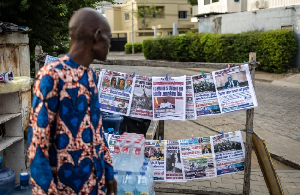Mango fruits are a delicacy for many people. In some parts of the world the love for mango has earned it the nickname “yellow gold”. However mango has not only generated love among people. It is a commodity that has also generated controversy. Oh, have you forgotten the brouhaha generated by comments from a politician that there were enough mangoes in Ghana for some Ghanaians claiming to be hungry due to government’s poor performance? This politician might have been aware of the quantity of mangoes that go to waste in Ghana every year. Any controversy that this crop generates will end one day, but it will only end when the challenges that confront its producers also end! And the challenges will also only end if we implement projects and programs that help us to realize our beautiful policies on the ground.
Government Policy
As part of the strategy to improve the country’s export-based growth, Ghana has pursued a demand-led exports growth since the mid-1990s. New opportunities in mango exports have emerged in the international market since that policy was pursued but the country hasn’t positioned itself to compete. To enhance Ghana’s comparative advantage and translate it into competitive advantage requires us to even more importantly produce high quality mangoes of the needed volumes. The potential for expanding domestic markets also exist as the economy expands and incomes grow. The capacity of commercial smallholders should be enhanced for them to produce for the international and expanding domestic markets, including agro-industry.
Ghana's agricultural sector policy points out the need for enhanced growth in incomes in the agricultural sector. The policy indicates unambiguously that enhanced incomes will reinforce food security through financial access to food.
There is need to diversify into cash crops in a more business-oriented fashion. There is also the need to add value to commodities being produced and to develop new products. It is also important that markets are found for existing, diversified and new products to ensure that incomes are increased and variability reduced from year to year within farming communities and between rural and urban areas.
Production Areas and Types of Farmers involved
As at 2012, Ghana had a total of 31,661ac mango plantations with Brong Ahafo and Northern regions as the leaders. All these plantations are now either currently in production or are in their early stages of production. Thanks to the cheap prices of mango seedlings these areas were mostly planted with good high yielding varieties.
It is striking to note that 76% of the area planted to mango is owned by members of farmer-based organizations (FBOs) and unorganized individual farmers. Nucleus farmers and their outgrowers own the remaining 24%. The outgrowers affiliated to nucleus plantations have their mature fruits easily sold to the nucleus plantations, which sometimes also export fruits and do processing of the fruits. The same cannot be said of members of FBOs and unorganized individual farmers who have to struggle to find buyers for their mature fruits. Their farms are also scattered making it too expensive for buyers to move from one farm gate to the other to buy fruits. Many of these farmers carry the little they can to buying centres and leave many other useful fruits to rot on the farms. Pest problems have also reduced the market appeal of the mangoes produced by these farmers and this has made it even more difficult for mangoes to be exported from Ghana.
Pricing
Prices of mangoes in Ghana is determined by demand and supply forces. In 2011, the price of 1kg of mango intended for the local market sold at farm gate for GHS 0.55. It increased to 0.90 in 2014. The price for 1kg of mango of the grade sold to the international market at farm gate was GHS 1.20 in 2013 and GHS 1.40 in 2014. This exportable fresh mango was selling for GHS 1.70 as at April-May 2015, while those for processing and the local fresh fruit market sold for GHS 1.00 and GHS 0.75 respectively.
In Joshua Adjoteye’s study for GTZ/MOAP, published in 2010, one kilogram of mangoes sold for between GHS 0.50 and GHS 1.00 depending on the outlet. The study further said that mangoes meant for the largest supermarkets were priced between GHS 0.80 to GHS 1. 50 (about US$ 1 based on exchange rate at the time. The dollar rate at the time of this study - i.e. April-May 2015 - was GHS 4 to US$ 1. The FOB price for mangoes then was GHS 3.00/kg or US$ 0.75).
Employment and losses
Mango trees take four years to start production of fruits. The investment cost for establishing 1ac of mango plantation (over 4yrs) is GHS 11,600.00. This brings the total cost of establishing the current 31,661.00ac to GHS 367.28m. A 1ac mango farm provides full-time work to 1.5 persons. The 31,661.00ac should therefore be providing employment to an estimated 47,400 people.
The 31,661.00ac of mango currently planted is expected to be producing 148,000 tons of mangoes annually, with farm gate value of GHS 153.92m.
According to the Ghana National Mango study (2012) by Abdallah K. Zakari, the average national losses following harvesting are between 20% and 50%. However, Mr. Ernest Amoansah, MD of Ohumpong Investments Ltd., owners of a mango plantation with main objective of exporting the mangoes, estimates losses to rather be between 40-60%. What the two of them are saying is that 20%-60% of the fruits produced are not being sold or utilized.
The 20-60% of fruits being lost are worth between GHS 30.78m and GHS 92.35m at farm gate. The FOB price for this quantity of lost fruits is between $22.20 and $66.60m yearly.
With a yield of 6,000kg/ac at the current weighted average price of GHS 1.04 the expected revenues of farmers for a 1ac plantation is reduced from GHS 6,240.00/annum to between GHS 4,992.00 – GHS 2,496.00/annum because of these losses. With an average maintenance cost of GHS 2,858.00 farmers’ profits per acre are reduced from an expected GHS 3,382.00 to between GHS 2,134.00 and (a loss of) -GHS 362.00.
Financial Analysis
The Net Present Value (NPV) starts to become positive when a farmer sells above 90% of his/her fruits. Any farmer who sells less than 90% of fruits produced is likely to be making losses.
With inflation almost constantly above 15%, an Internal Rate of Return (IRR) below 15% leaves us with negative real returns of farms that sell even up to 90% of their produce, since the IRR when 90% of fruits are sold is only 14%. With commercial interest rates from banks between 30-35%, taking any commercial loan from these banks for mango cultivation and even selling 100% of your fruits will not make the farm a viable business, since selling 100% of fruits gives an IRR of 17%. With an estimation of selling 70%, 80% or 90% of fruits produced, loans for servicing these investments cannot have interest rates going beyond 7%, 11% and 14% respectively. Just like for many other agricultural commodities, any financial support for mango cultivation will therefore have to be concessional. The current economic environment also makes it even more rational to invest in near risk-free financial instruments like T-Bills and make between 20-25% returns than to go into a riskier agricultural business that gives 17% maximum returns.
Conclusion
Planting mangoes and selling fresh fruits at farm gate is not one that passes as a lucrative business in the current Ghanaian context. The challenge is also compounded by the inability of many farmers to get buyers to off-take their fruits. The off-take of farmers’ produce is therefore a weak link within the mango value chain that needs to be addressed. Structures to enable farmers to easily sell their mango fruits and therefore cut down on losses are crucial for the sustainability of the existing plantations. A further delay in providing the needed interventions could result in farmers cutting down their mango plantations and rendering all the investment made so far a complete waste.
We certainly cannot afford to continue throwing away $66m worth of mangoes every year. We can do far better than this! This amount of money can make a big difference in the lives of mango farmers and other mango value chain actors.
Apart from the financial benefits farmers seek, mango is a tree crop that can also be used to restore the greenery of the northern part of the country and stop further downward movement of the Sahara desert. Being a tree crop makes it a good commodity to use to sequester carbon and therefore fight climate change.
Written by: Joseph Baidoo-Williams, MBA, PMP®, the writer of this article, is a Director/Consultant at Project Management Experts (PME) Ltd. He is very experienced in Tree Crops development. He is also an outgrower/smallholder schemes expert. He can be contacted through the email, jbaidoowilliams@yahoo.com.
Credit to Mr. Ernest Amoansah, Managing Director of Ohumpong Investments Ltd., for willingly providing copious data to help with the analysis in this article.
Business News of Thursday, 17 September 2015
Source: Joseph Baidoo-Williams
Profitability of mangoes and a $66 million yearly loss
Opinions












